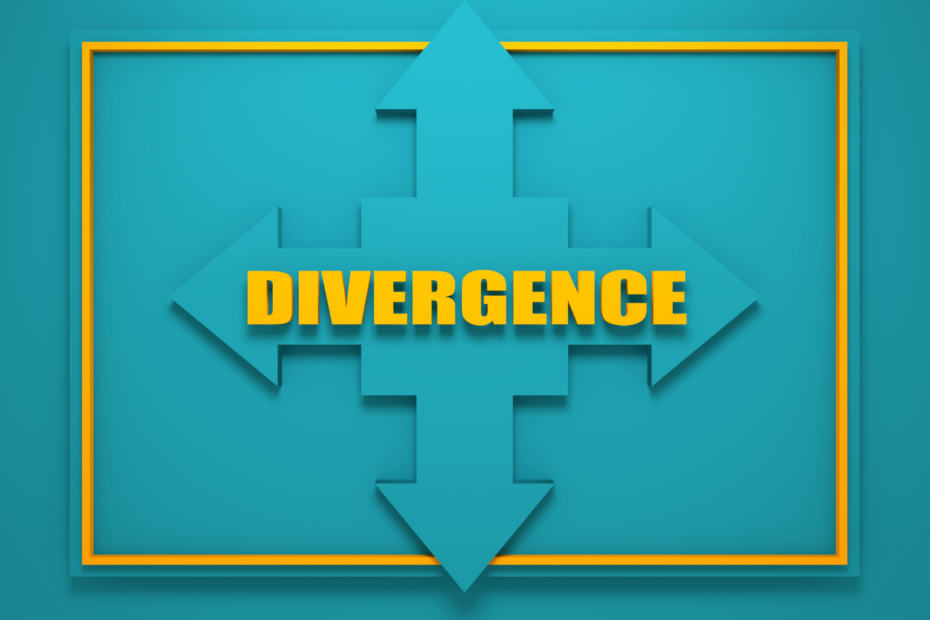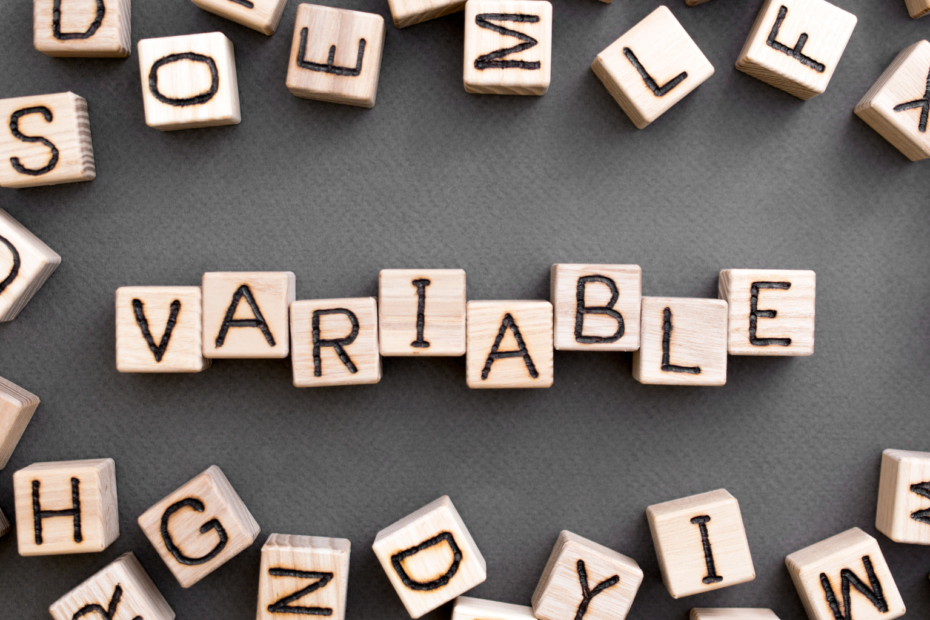Welcome to our exploration of bias—a pervasive and multifaceted aspect of decision-making and analysis. This inclination or prejudice for or against something or someone subtly influences our judgments, actions, and interpretations. In this article, we unravel the layers of bias, understanding its types, origins, impact, and methods to detect and mitigate it. Join us as we navigate through the complexities and its profound implications in various domains.
What are the different types of Bias?
Bias, a pervasive force in decision-making, manifests in various forms, each shaping our perceptions and judgments. Understanding these types is crucial for navigating a world inundated with information and choices. Here are the main types:
- Confirmation: People tend to seek and interpret information in a way that confirms their preexisting beliefs or hypotheses. This can lead to an overemphasis on supporting evidence and a disregard for contradictory information.
- Selection: Arises when the selection of the sample used in an analysis is biased and not representative of the entire population. This can skew research outcomes and generalizations.
- Cognitive: These biases are inherent to human cognition and influence decision-making. They stem from mental shortcuts, heuristics, and perceptual filters that may deviate from optimal, rational judgments.
- Overconfidence: People tend to overestimate their own abilities, knowledge, or the accuracy of their beliefs and predictions. It can lead to taking excessive risks or making poor judgments.
- Anchoring: This bias occurs when individuals heavily rely on the first piece of information encountered when making decisions. Subsequent judgments are often adjusted based on this initial “anchor.”
- Availability: The tendency to overestimate the likelihood of events based on how easily instances or examples come to mind. Vivid or recent memories may overshadow statistical probabilities.
- Stereotyping: This involves applying generalizations or stereotypes about a group to individuals within that group. It can lead to unfair judgments and discriminatory behavior.
- Survivorship: Focusing on successful outcomes while overlooking failures or those that did not make it through a selection process. This skews perceptions and analyses.
- Recency: People tend to give more weight to recent events or information when making judgments or predictions, often underestimating the importance of past data.
- Publication: Occurs when research outcomes that show a significant effect or result are more likely to be published, leading to an overrepresentation of positive findings in the literature.
Being aware of these biases and their potential impact allows us to critically evaluate information, make more objective decisions, and design research and analysis that mitigates their adverse effects.
What are the causes and sources of Bias?
Ingrained within both human cognition and societal structures, subjectivity subtly shapes the way we perceive information and make decisions. This subjectivity draws from a mosaic of sources, encompassing personal experiences, cultural backgrounds, and individual beliefs. These unique perspectives wield significant power in molding our judgments and choices. Moreover, societal and cultural norms interweave with subjectivity, leaving their indelible mark on our perceptions and interactions, inevitably impacting our treatment of individuals.
Incomplete or outdated information acts as another channel through which our perspectives may become skewed. Depending on inadequate or obsolete data can distort our comprehension, potentially leading us down erroneous paths when making conclusions or decisions. This is compounded by researcher perspectives and preconceptions that can surreptitiously sway study design, data interpretation, and the overall trajectory of research.
Moreover, the origin of research funding may exert its own influence. Studies underwritten by organizations with vested interests can be inclined to align outcomes with their own agenda. In academic circles, the specter of publication bias in journals looms large. These journals frequently exhibit a preference for studies that yield significant or positive results, thereby constructing a fragmented representation of the research landscape.
The temporal and contextual backdrop against which a decision or research is conducted can exert substantial influence on the resultant outcomes and perspectives. The prevailing economic, social, or political climate during such moments significantly shapes the conclusions reached and the views held. Furthermore, how information is presented or the initial piece of information encountered—referred to as anchoring and framing effects—can elicit disparate interpretations and decisions.
Media representation and coverage possess the capacity to subtly mold public opinion and perspectives, occasionally reinforcing biases, even unintentionally. In the realm of technology, algorithms employed in decision-making processes can perpetuate biases present in the datasets on which they are trained, ultimately yielding skewed outcomes.
Recognizing and understanding the myriad sources that contribute to these nuanced influences is of paramount importance. Such comprehension equips us to navigate toward a more impartial and equitable environment for decision-making and research, thereby striving for objectivity and fairness.
What are the effects of a Bias?
Deeply rooted within human cognition and the very framework of societal structures, inherent influences wield substantial impact across a multitude of domains, ranging from the shaping of decisions to the formulation of policies.
Altering Decision Dynamics: A bias reshapes the decision-making landscape, often guiding choices toward directions that may fall short of being optimal or just. These guided decisions, shaped by undercurrents, may offer preferential treatment to specific individuals, groups, or ideologies, inadvertently perpetuating disparities.
Disparity in Treatment: These influences often breed disparities in the treatment of individuals based on their characteristics, such as race, gender, or socioeconomic status. This dissonance manifests in various contexts, extending its reach from workplaces and healthcare systems to educational institutions and legal frameworks.
Impaired Objectivity: The undercurrent of influence compromises the impartiality necessary for a clear, neutral appraisal of facts and evidence. In this altered landscape, objectivity wanes, impacting the integrity and precision of research, analyses, and the ultimate inferences derived.
Sustaining Preconceived Notions: Akin to a self-sustaining loop, these influences further solidify preconceived notions and stereotypes, nurturing misconceptions about specific groups. This cyclic effect fuels discrimination and marginalization, fortifying the continuance of influence.
Societal Impact: The ripple effect of these deeply ingrained influences extends across society, giving rise to division, intolerance, and prejudice. These societal frictions hinder harmonious coexistence, thwart collective endeavors, and impede the journey toward a more inclusive and unified society.
Restricting Diversity and Innovation: Dampening the vibrant tapestry of diversity, these influences often yield favor to specific demographics or ideas, stifling innovative problem-solving mechanisms that thrive on multifaceted perspectives and varied experiences.
Economic Consequences: These influences can manifest as economic disparities, constraining opportunities for particular groups. The resulting inequitable distribution of resources, prospects, and market accessibility amplifies an imbalance in economic advancement and growth.
Erosion of Trust and Credibility: As these influences seep into decision-makers and institutions, they corrode the bedrock of trust and credibility. Individuals lose faith in systems that appear biased, unfair, or discriminatory.
Legal and Ethical Implications: These undercurrents may bear legal and ethical consequences, as discrimination stemming from them can trigger legal action, public protests, or expressions of public dismay. These repercussions underscore the pressing need for addressing these influences across an array of spheres.
Healthcare Disparities: In healthcare systems, the pervasive influences may introduce disparities in medical access and health outcomes. This unequal distribution of services can disproportionately affect marginalized communities and broaden health inequities.
Understanding the far-reaching effects of these subtle influences is imperative. Such comprehension is the bedrock upon which strategies are constructed to mitigate these influences, foster fairness, and champion the emergence of a more inclusive and equitable society. The responsibility for addressing these influences is a collective endeavor, requiring unwavering commitment and collaborative efforts across all echelons of society.
What is an implicit Bias?
In our interactions, we often carry preconceived notions and automatic judgments that influence our thoughts, decisions, and behaviors without our conscious awareness. These ingrained attitudes can be both subtle and powerful, subtly coloring our views of others and contributing to systemic disparities. Recognizing and confronting these unconscious perceptions is a crucial step in fostering more equitable and inclusive environments.
These subtle biases can manifest as implicit stereotypes—unconscious associations and expectations that our brains make based on factors such as race, gender, age, or other social characteristics. While unintentional, implicit stereotypes can significantly impact our judgments and actions.
Implicit bias can affect our decisions in various domains, from hiring practices to medical diagnoses. For example, a medical professional might unknowingly rely on an implicit stereotype when assessing a patient’s symptoms, potentially leading to misdiagnosis or delayed treatment. In another context, hiring managers may unintentionally favor or disfavor candidates based on implicit biases, contributing to unequal opportunities.
Acknowledging implicit stereotypes requires self-reflection and an open mind. It involves confronting the possibility that you may hold unconscious preconceptions that do not align with your conscious beliefs. Here are some steps to begin this process:
- Self-awareness: Reflect on your automatic judgments and reactions in various situations.
- Education: Learn about different forms of bias and their consequences.
- Open dialogue: Engage in open conversations with others to gain diverse perspectives.
- Challenge assumptions: Question your own thought patterns and beliefs, particularly when they appear to be driven by implicit stereotypes.
Confronting implicit bias is an ongoing journey, and various strategies can help mitigate its impact:
- Implicit bias training: Many organizations offer training programs to increase awareness and provide tools for mitigating unconscious preconceptions.
- Inclusive policies: Implement and promote inclusive policies and practices to minimize the influence of implicit bias.
- Diverse representation: Encourage diverse representation in decision-making processes to bring a broader range of perspectives to the table.
- Accountability: Hold individuals and organizations accountable for addressing implicit bias and its consequences.
By actively acknowledging and challenging implicit stereotypes and biases, we can take meaningful steps toward creating more equitable and just environments for all.
What are ways to detect a Bias?
Detecting bias is a crucial step in fostering a fair and equitable society. It involves recognizing and understanding the various forms that can permeate our thoughts, actions, and decision-making processes. By shedding light on these, we can work towards mitigating their impact and promoting fairness. Let’s explore different approaches to identifying preconceptions across various domains.
One of the fundamental aspects of bias detection is cultivating awareness and education. Learning about its different forms, their manifestations, and underlying causes is essential. This knowledge enables us to recognize biased behaviors and attitudes, paving the way for a more informed approach to bias detection.
Self-reflection and consciousness play significant roles in uncovering preconceptions. Encouraging individuals to regularly reflect on their thoughts, actions, and decisions helps in identifying subtle biases that might otherwise go unnoticed.
Seeking diverse perspectives and feedback is another powerful tool in detecting preconceptions. Gathering input from a broad range of individuals offers varying viewpoints, highlighting biases that may not be immediately apparent. Constructive criticism and feedback are invaluable in recognizing and addressing it effectively.
Data analysis and auditing provide a structured approach to uncovering the problem. By employing data analysis techniques, we can scrutinize patterns and trends for any disparities or inconsistencies across different demographic groups. Such disparities often indicate the presence of bias within the analyzed systems.
Testing and experimentation involve controlled studies to measure it in decision-making processes. By varying parameters and observing outcomes, we can assess whether certain factors lead to biased results. These experiments offer valuable insights into the potential preconceptions within a system.
Comparative assessments, where we measure decisions or outcomes against established standards of fairness and equality, can help identify preconceptions. Any significant disparities between expected and observed results indicate the possible presence of it, prompting a closer examination.
External audits and reviews by impartial experts are essential to provide unbiased evaluations of systems, policies, or processes. These external perspectives can uncover systemic preconceptions that may not be evident through internal assessments alone, guiding us in implementing necessary corrections.
Behavioral observation in various contexts, such as workplaces or public spaces, is an effective method to identify instances of differential treatment based on various characteristics. By keenly observing behavior, we can highlight biases that impact individuals or groups.
Leveraging machine learning algorithms is an advanced approach to detect and mitigate bias, especially in automated systems. These algorithms can analyze patterns and identify discrimination in algorithms or data-driven processes, contributing to more equitable outcomes.
Legal and compliance reviews are crucial for ensuring that systems and policies adhere to anti-discrimination laws and ethical standards. Engaging legal professionals or compliance experts in these reviews helps in identifying and rectifying any preconceptions that may exist.
Interviews and surveys that collect qualitative data on experiences, perceptions, and attitudes are insightful tools for identifying preconceptions. Qualitative insights provide a deeper understanding of preconceptions prevalent in a given population, aiding in targeted interventions.
Historical analysis involves reviewing past data and events to identify instances of bias and discrimination. Understanding historical preconceptions is instrumental in recognizing recurring patterns and their impact on current structures.
By employing a combination of these diverse methods and approaches, we can effectively detect biases and lay the foundation for targeted interventions. This multi-faceted approach allows us to work towards reducing preconceptions and fostering a society that values fairness and equality.
What are prominent ways to mitigate a Bias?
Mitigating bias is a critical endeavor aimed at fostering fairness, inclusivity, and informed decision-making. Addressing bias involves implementing strategies and measures to reduce its impact across various domains. Let’s explore effective ways to mitigate bias and cultivate a more equitable society.
Education and Awareness: Education is a potent tool in bias mitigation. By raising awareness about different types of biases, their consequences, and ways to recognize them, individuals can actively work towards mitigating preconceptions in their thoughts, actions, and interactions. Educational initiatives should emphasize empathy, understanding, and embracing diversity.
Diverse Representation: Incorporating diverse perspectives and voices is pivotal in reducing bias. Ensuring representation from a wide range of demographic backgrounds, cultures, genders, and experiences promotes a more comprehensive understanding of issues and minimizes the risk of preconceptions stemming from a homogenous viewpoint.
Structured Decision-Making Processes: Implementing structured decision-making frameworks and guidelines helps reduce biases. These frameworks can include clear criteria, defined procedures, and guidelines that decision-makers follow, mitigating the influence of personal preconceptions. Incorporating checks and balances in decision-making processes is crucial.
Implicit Bias Training: Training programs aimed at recognizing and addressing implicit biases are highly effective. These programs provide individuals with the tools to identify their unconscious preconceptions and strategies to counteract them. By promoting self-awareness, individuals can actively challenge and change their biased beliefs and behaviors.
Algorithmic Audits and Fair AI: In contexts where algorithms play a role, conducting regular audits to identify and rectify biases within the algorithms is essential. Striving for fairness in AI systems by incorporating fairness metrics and addressing bias during algorithm development can significantly reduce discriminatory outcomes.
Transparency and Accountability: Fostering a culture of transparency and accountability is vital. Clearly articulating decision-making processes, criteria, and the rationale behind decisions helps in reducing bias suspicions. Holding decision-makers accountable for their actions encourages fair and unbiased behavior.
Bias-Resistant Design: Designing systems, products, and processes with bias-resistance in mind is crucial. Utilizing techniques such as blind recruitment, anonymizing data, and employing inclusive design principles can help reduce the inadvertent introduction or perpetuation of preconceptions.
By employing a combination of these strategies and being committed to ongoing efforts, we can mitigate bias and work towards a more just and equitable society where everyone is treated fairly and with respect.
What is the Bias-Variance Tradeoff in Machine Learning?
The bias-variance tradeoff is a fundamental concept in Machine Learning that deals with the problem of balancing model complexity with predictive accuracy. It refers to the relationship between the model’s ability to fit the training data and its ability to generalize to new data. In general, a model with high bias underfits the training data, while a model with high variance overfits the training data.
A high-bias model is one that is too simple to capture the underlying patterns in the data. It typically results in low accuracy on both the training and test data sets. This is because the model is unable to capture the complexity of the data, leading to systematic errors. On the other hand, a high variance model is one that is too complex and is overly sensitive to noise in the training data. Such a model usually has high accuracy on the training data, but poor performance on the test data. This is because the model has learned the noise in the training data, resulting in poor generalization to new data.

The bias-variance tradeoff arises because increasing the complexity of the model can reduce bias but increase variance while reducing the complexity can reduce variance but increase bias. The goal of model training is to find the sweet spot where these two problems.
This is what you should take with you
- Understanding the pervasive nature of bias is the first step toward minimizing its impact in various domains.
- Embracing a range of viewpoints fosters a more inclusive and well-rounded understanding of issues, reducing the risk of biased judgments.
- Educational initiatives aimed at recognizing and addressing preconceptions can profoundly influence behavior and mitigate their adverse effects.
- Bias mitigation is an ongoing process; regular reviews, feedback loops, and adaptability to new insights are vital to maintaining progress.
- Individuals, communities, organizations, and policymakers must collaborate to effectively mitigate bias and create a more equitable society.
- Prioritizing inclusivity in all aspects, from language to decision-making, is fundamental in reducing biases and promoting fairness.
What is Gibbs Sampling?
Explore Gibbs sampling: Learn its applications, implementation, and how it's used in real-world data analysis.
What is the Variance?
Explore variance's role in statistics and data analysis. Understand how it measures data dispersion.
What is the Kullback-Leibler Divergence?
Explore Kullback-Leibler Divergence, a vital metric in information theory and machine learning, and its applications.
What is the Maximum Likelihood Estimation?
Unlocking insights: Understand Maximum Likelihood Estimation (MLE), a potent statistical tool for parameter estimation and data modeling.
What is the Variance Inflation Factor (VIF)?
Learn how Variance Inflation Factor (VIF) detects multicollinearity in regression models for better data analysis.
What is the Dummy Variable Trap?
Escape the Dummy Variable Trap: Learn About Dummy Variables, Their Purpose, the Trap's Consequences, and how to detect it.
Other Articles on the Topic of Bias
Cornell University offers an interesting lecture on the Bias-Variance Tradeoff.

Niklas Lang
I have been working as a machine learning engineer and software developer since 2020 and am passionate about the world of data, algorithms and software development. In addition to my work in the field, I teach at several German universities, including the IU International University of Applied Sciences and the Baden-Württemberg Cooperative State University, in the fields of data science, mathematics and business analytics.
My goal is to present complex topics such as statistics and machine learning in a way that makes them not only understandable, but also exciting and tangible. I combine practical experience from industry with sound theoretical foundations to prepare my students in the best possible way for the challenges of the data world.





